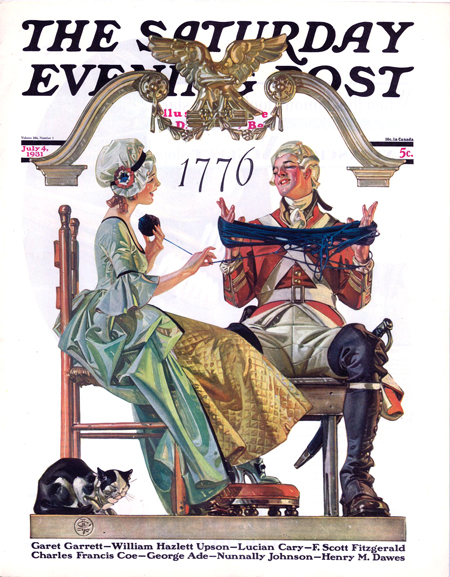Artists and Models
It frightens me when students don’t know Norman Rockwell. Before Norman Rockwell became America’s favorite illustrator, J.C. Leyendecker held that position. So, for those of you who are yearning for important illustration history, here it is:
Leyendecker is best known for his Arrow Collar ads and Saturday Evening Post covers. Leyendecker, however, is largely forgotten outside the illustration community. The story behind this is an untapped mini-series.
Leyendecker immigrated to America in 1882. He went to the Chicago Art Institute and later moved to New York with his brother and sister. In 1903, he met Charles Beach, who became his favorite model and lover. Beach was the Arrow Collar man, and received fan mail from across the country. Leyendecker reached the height of his success during the 1920s. Leyendecker and Beach lived lavishly, hosting scandalous parties with New York’s social set. Leyendecker’s brother, Frank, was also rumored to be gay. In the early 1920s, Frank and his sister, Mary, had a spectacular falling out with Leyendecker and Beach. The row ended with Mary spitting in Beach’s face. They moved away, and Frank died alone one year later.
Leyendecker left Manhattan, and purchased a large estate in New Rochelle with a staff of servants. During the 1930s, Leyendecker’s commissions began to slow, and he was forced to scale back his lifestyle. Yes, it’s awful, but he had to let the staff go. He and Beach continued to maintain the estate alone. At some point here, Beach began to limit Leyendecker’s contact with the outside world, and vice versa. Norman Rockwell, a longtime friend, complained that Beach had, “built a wall around him.” In 1951, Leyendecker died with Beach at his side. His funeral was sparsely attended. Whether this was due to his sexual orientation, or the wall Beach had built is speculation. Rockwell, however, did attend and served as a pallbearer. Leyendecker left instructions for Beach to destroy everything. Fortunately, he stopped at discarding the paintings and sketches. He sold these at a yard sale for the high price of seven dollars. In 2004, Christies sold a Leyendecker painting for $209,100.00.













